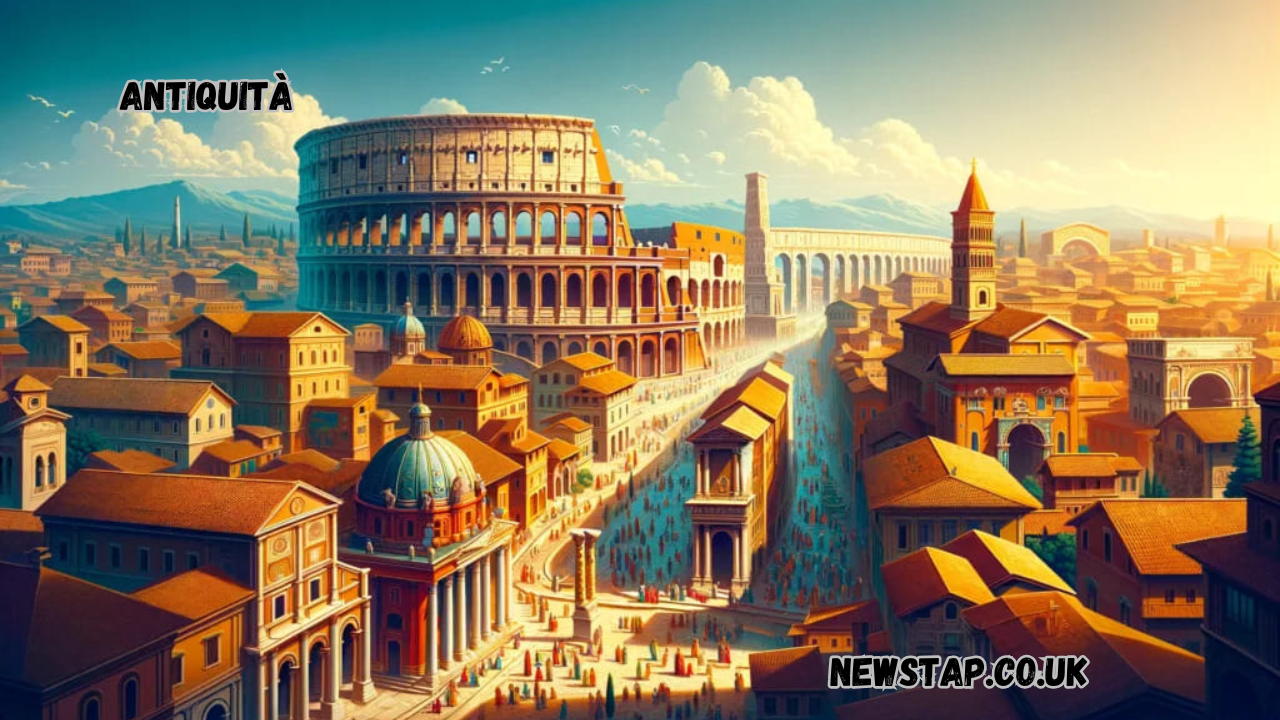In a world where history and culture are preserved through the ages, the term “antiquità” plays a crucial role in understanding the past. Derived from the Italian word for “antiquity,” it refers to objects, artifacts, or periods that are ancient, valuable, and significant to historical and cultural studies. While it has roots in the Italian language, the concept of antiquity is recognized worldwide, representing an era that predates the present and encompasses the history of civilizations, art, architecture, and society.
This article will delve into the meaning of “antiquità,” its significance in various fields such as archaeology, art history, and culture, and explore its implications in both historical and modern contexts. By the end, you’ll have a deeper understanding of the term and its importance across different domains.
What is Antiquità?
“Antiquità” is the Italian word for “antiquity,” which generally refers to the distant past, particularly to the periods of classical civilizations such as Ancient Greece, Rome, and Egypt. It is often used to describe objects, works of art, buildings, and other cultural items that originate from ancient times. The term can encompass anything from sculptures and pottery to manuscripts and architectural ruins.
In a broader sense, “antiquità” refers to:
- Ancient Objects – These could be artifacts from previous civilizations, ranging from everyday items like tools and pottery to ceremonial or religious objects.
- Historical Periods – It also refers to specific periods of history that are studied for their cultural, political, or technological achievements, such as Ancient Rome or Ancient Greece.
- Cultural Legacy – “Antiquità” represents the enduring influence that these ancient civilizations have on contemporary society, art, philosophy, and architecture.
The study of antiquity allows historians, archaeologists, and scholars to gain insights into how ancient societies functioned and contributed to modern civilizations.
The Importance of Antiquità in Archaeology and History
Antiquity is a central concept in the field of archaeology, which is dedicated to uncovering and studying the remains of past civilizations. Archaeologists often focus on discovering ancient artifacts, monuments, and structures that provide clues about the daily lives, rituals, and practices of ancient peoples.
Excavations and Discoveries
Through excavations, researchers unearth objects and relics that date back thousands of years. These finds allow historians to piece together the puzzle of human development and the evolution of cultures. Items such as ancient pottery, tools, weapons, and statues are categorized as “antiquità” because they offer valuable insights into how people lived, worked, and interacted with their environment.
For example, the discovery of Pompeii in Italy revealed the well-preserved remains of an ancient Roman city destroyed by a volcanic eruption in 79 AD. The preserved buildings, frescoes, and everyday objects provided a glimpse into the lives of ordinary Romans, allowing historians to better understand their culture, social structures, and even their tastes in art and entertainment.
The Study of Ancient Civilizations
The study of antiquity also extends to understanding the history of civilizations that have shaped modern society. Ancient Greece, Rome, Egypt, and Mesopotamia, among others, contributed significantly to art, philosophy, politics, and science. The writings of philosophers such as Plato, Aristotle, and Socrates, or the works of poets like Homer, are considered treasures of antiquità that continue to influence modern thought.
The Roman Empire, with its vast network of roads, architecture, and governance systems, also left behind a legacy that has shaped modern legal systems and infrastructure. The study of these ancient societies, through both physical artifacts and literary texts, helps us comprehend the foundations of contemporary civilization.
Antiquità in Art History and Culture
In the realm of art history, “antiquità” refers not only to the objects and artifacts of ancient cultures but also to the styles, techniques, and aesthetics that emerged in the past. Many of the most iconic art forms we admire today, such as classical sculptures, frescoes, and mosaics, are considered to be part of antiquity.
Classical Art and Sculpture
The art of ancient Greece and Rome is perhaps the most well-known example of antiquità in art history. Ancient Greek sculpture, for instance, was revolutionary in its depiction of the human form. Artists like Phidias and Praxiteles created lifelike statues that captured the beauty and complexity of the human body. These works, often created from marble or bronze, emphasized balance, proportion, and realism, setting the standard for later European art movements.
Roman art, on the other hand, was heavily influenced by Greek models but added its own elements of grandeur and realism. Roman portraiture, for example, was known for its attention to detail, especially in depictions of emperors and public figures. These statues were used as tools of political propaganda, ensuring that the image of Roman leaders was immortalized for future generations.
Preservation and Influence
The preservation of these works of art, as well as the techniques employed to create them, influenced later art movements such as the Renaissance. During this period, artists such as Michelangelo and Raphael revived classical ideals, looking back to the art of antiquity for inspiration. In fact, the study of antiquità during the Renaissance led to a resurgence in interest in Greek and Roman sculptures, architecture, and philosophy.
Today, the influence of antiquity continues to shape modern art and culture. Whether it’s in the neoclassical architecture of government buildings or the appreciation for ancient artistic styles in contemporary museums, the legacy of antiquity endures in both the visual arts and cultural practices.
The Role of Antiquità in Architecture and Engineering
Ancient architecture is another area where the study of antiquità plays a crucial role. The architecture of ancient civilizations, such as the Greek Parthenon, the Roman Colosseum, and the Egyptian pyramids, has greatly influenced the development of modern architectural design and engineering principles.
Roman Engineering and Construction
Roman engineers, for example, were pioneers in the development of concrete, which allowed them to create large, durable structures such as aqueducts, bridges, and amphitheaters. These innovations in engineering made it possible for the Romans to build some of the most impressive and enduring structures in history, many of which still stand today. The use of arches, vaults, and domes in Roman architecture became key elements of subsequent architectural styles, particularly during the Renaissance and Baroque periods.
Preservation and Influence on Modern Architecture
Modern architects often look to ancient buildings as sources of inspiration. The principles of symmetry, proportion, and harmony that defined classical architecture continue to inform the design of both public and private buildings. For example, many government buildings in the United States, such as the White House and the Capitol Building, draw on classical Roman and Greek architectural forms, emphasizing grandeur and stability.
The influence of antiquity is also evident in the design of modern homes and commercial buildings, where elements like columns, domes, and facades are often incorporated to evoke the timeless elegance of ancient structures.
Antiquità in Modern Society and Collecting
Beyond its academic and historical significance, “antiquità” also holds immense value in the world of collecting and antique trade. Collectors around the world seek out ancient artifacts, artworks, and furniture for their historical value, beauty, and rarity.
The Antique Market
The market for antiquities is vast and global, with collectors and institutions investing in objects that hold both aesthetic and historical significance. Auction houses, art galleries, and private collectors often specialize in the sale and preservation of ancient items. These can range from ancient coins and jewelry to furniture and pottery.
The value of antiquities is often determined by their rarity, condition, and provenance. Authentic artifacts with well-documented histories tend to command the highest prices. However, the acquisition of antiquities also raises ethical concerns, particularly regarding the illegal trade of cultural artifacts. Efforts to combat looting and the illicit trafficking of antiquities have led to increased regulation and international cooperation in preserving cultural heritage.
Cultural Appreciation and Preservation
Beyond collecting, antiquities are also valued for their role in preserving cultural heritage. Museums and institutions around the world dedicate resources to safeguarding ancient artifacts, providing access to the public for educational purposes. Many of these objects are displayed in exhibitions that highlight their historical significance and allow future generations to learn from the past.
The Global Significance of Antiquità
The study and appreciation of antiquity is not confined to any one culture or region. Antiquità holds universal significance because it connects us to the roots of human civilization. From the Mayan ruins of Central America to the Great Wall of China, the remnants of ancient societies offer insight into the diversity of human experiences across time.
Through the exploration of antiquity, we gain a deeper understanding of our shared history, the development of cultures, and the achievements that have shaped the world we live in today. The preservation and study of antiquità continue to be crucial in fostering respect for our global heritage and ensuring that the stories of the past are not lost to time.
Conclusion
The term “antiquità” encompasses a rich and diverse array of meanings, all of which point to the importance of the past in shaping the present and future. From ancient artifacts and historical periods to artistic achievements and architectural marvels, antiquity offers a window into the lives of those who came before us. The study and preservation of antiquità continue to inspire and inform various fields, from archaeology and art history to architecture and culture.
In a world where the pace of change often feels rapid, antiquity serves as a reminder of the enduring legacy of past civilizations. By appreciating and understanding antiquities, we not only honor the achievements of ancient societies but also enrich our own cultural experiences. Whether through academic study, collecting, or simply admiring the beauty of ancient objects, the significance of “antiquità” will continue to resonate for generations to come.



